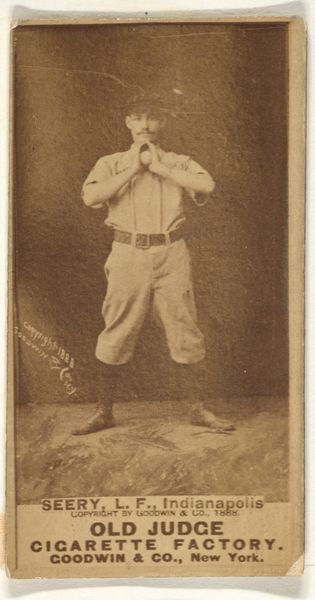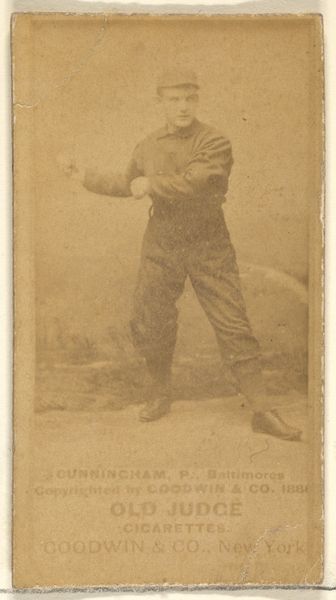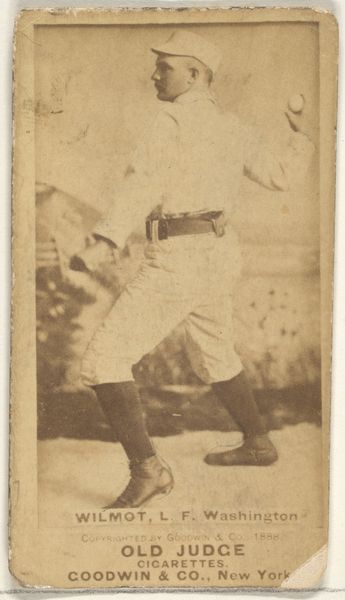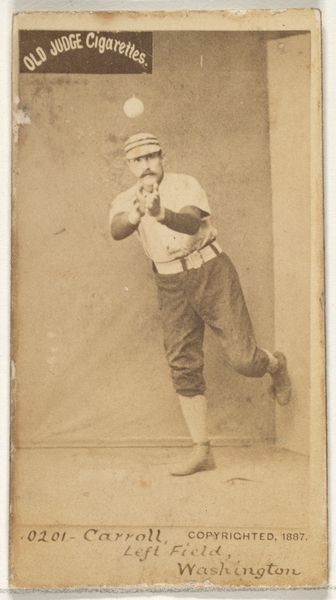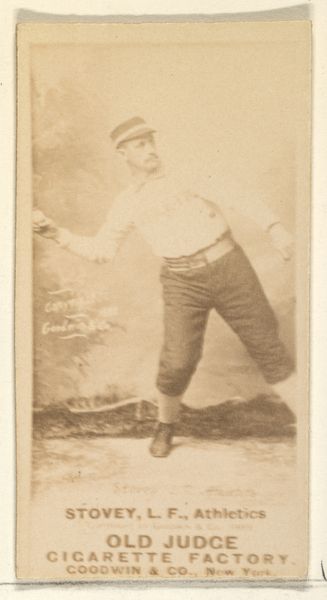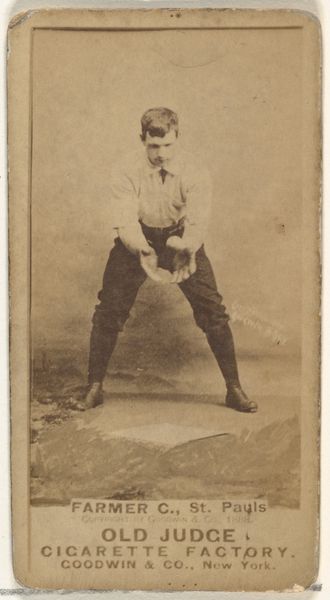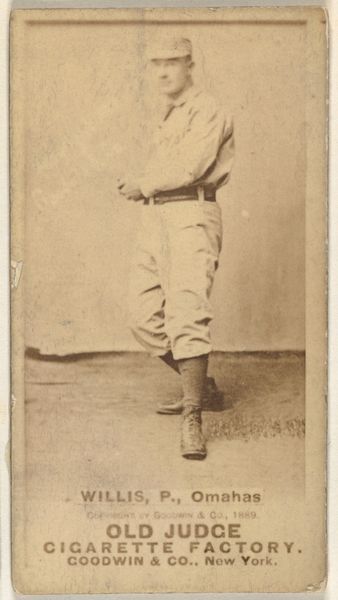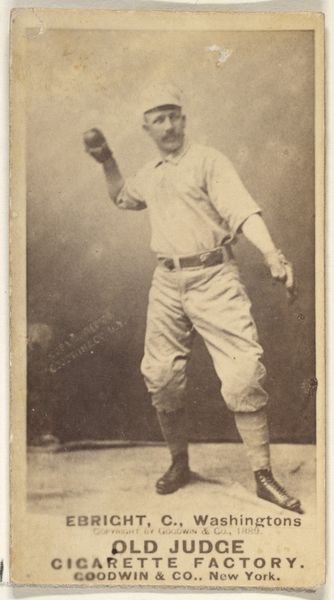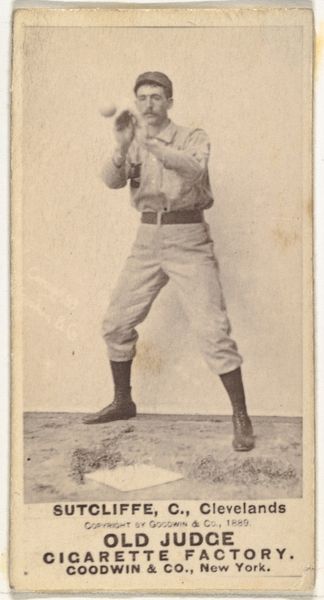
Boyce, Catcher, Washington, from the Old Judge series (N172) for Old Judge Cigarettes 1888
0:00
0:00
drawing, print, photography, albumen-print
#
portrait
#
drawing
# print
#
baseball
#
photography
#
men
#
genre-painting
#
albumen-print
#
realism
Dimensions: sheet: 2 11/16 x 1 3/8 in. (6.9 x 3.5 cm)
Copyright: Public Domain
Editor: Here we have "Boyce, Catcher, Washington, from the Old Judge series" an albumen print from 1888, produced by Goodwin & Company. It's a baseball card, really, and I'm struck by how staged it feels. He's sitting on a rock like a Victorian portrait. What's your read on this piece? Curator: Well, let's consider this baseball card not just as a piece of sports memorabilia, but as a window into late 19th-century masculinity and consumer culture. This image, reproduced on cigarette cards, was a tool for promoting not just a sport, but a particular vision of American identity tied to ideals of athleticism, strength, and even capitalism. Who was this image intended to appeal to? Editor: Cigarette smokers, presumably! The text says Old Judge Cigarettes so I suppose it was targeted to baseball fans who also smoked, mainly men I imagine. Curator: Precisely. And how might the staging contribute to that message? Notice the carefully constructed pose, almost like a Greco-Roman sculpture. This wasn't just about showcasing athleticism; it was about elevating the baseball player to the level of a classical hero. What do you think that communicated about American ideals at the time? Editor: So it wasn't just about baseball; it was about associating these players with an older ideal, one that maybe implied good character or something. The photo would have suggested a strong, dependable figure. Did it affect who could imagine themselves as a ‘real’ American? Curator: Absolutely. And let's consider who *isn't* in this picture. Whose stories are left untold in these idealized images of baseball and American masculinity? That absence is just as telling as what's presented. Editor: That makes me see it very differently. I thought it was just a baseball card, but now I understand it’s more about social and gender constructions from that time period. Thanks! Curator: It reveals to us, the complex narratives of identity and representation that continue to shape our society. There is always a larger narrative at play if you start digging!
Comments
No comments
Be the first to comment and join the conversation on the ultimate creative platform.


